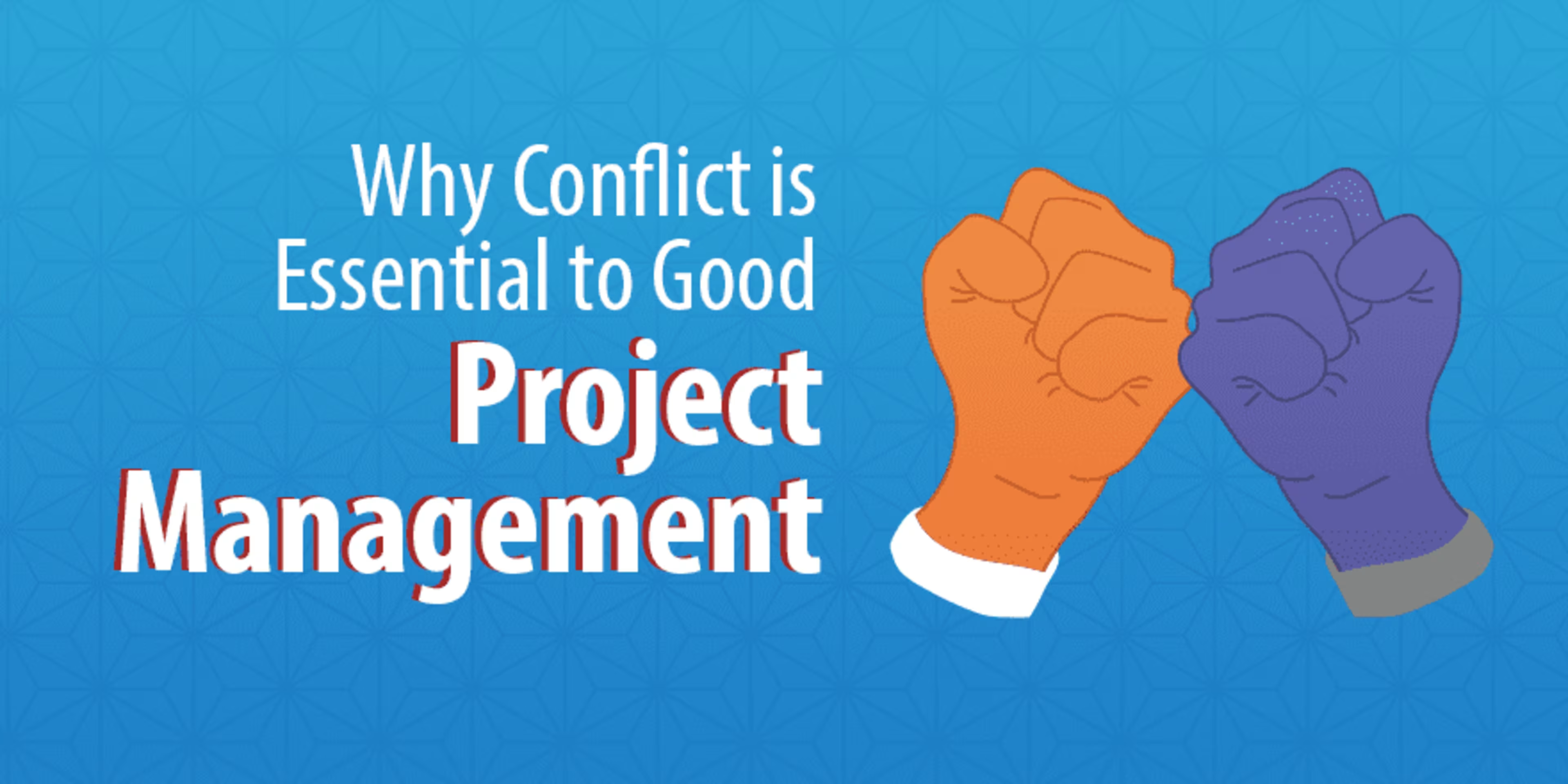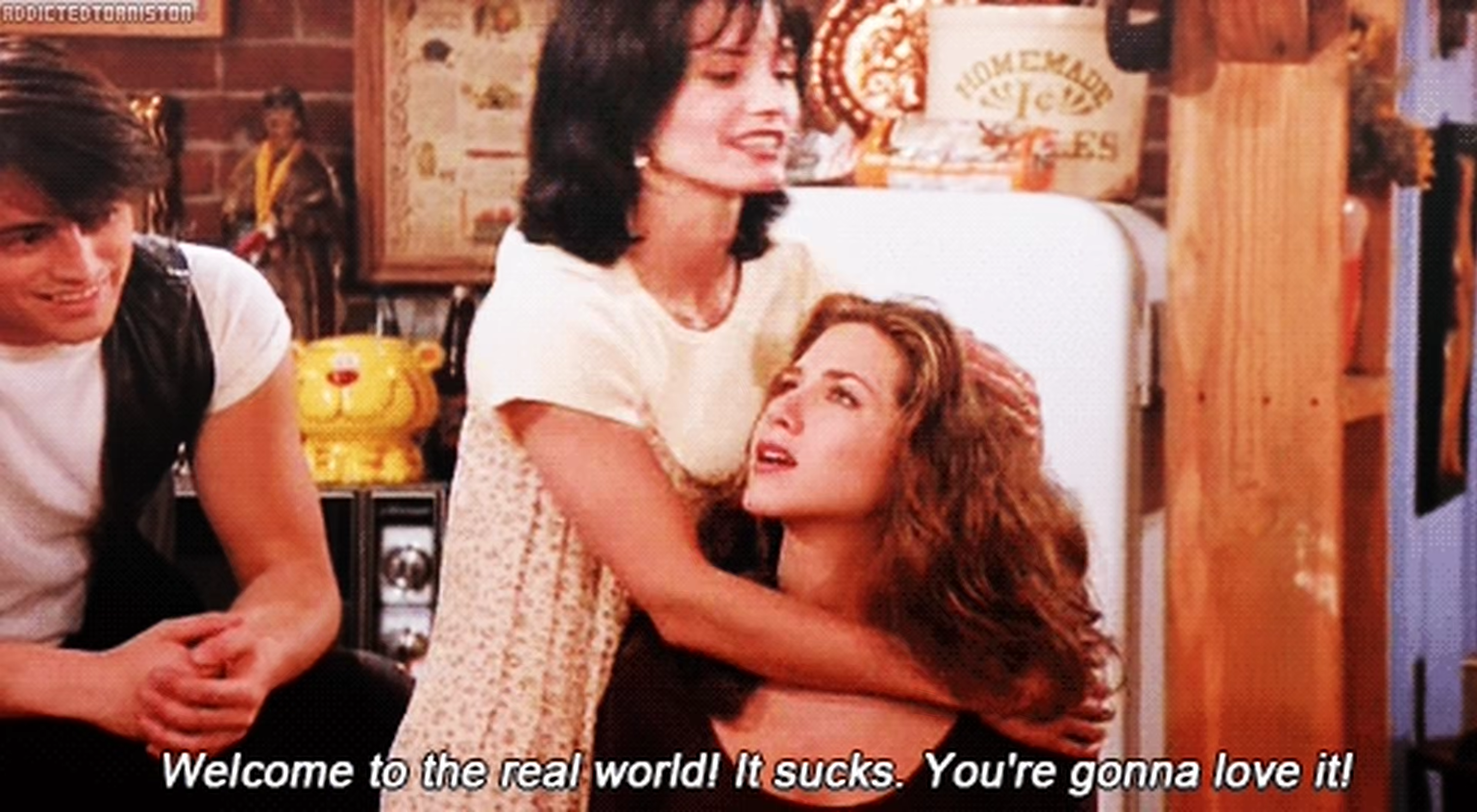I’m a rainbows, puppies, and butterflies kind of person.
I walk into a room and assume that everyone is doing great. The thought of everyone on my team getting along and enjoying each other’s company makes me want to write love songs. I like to think that if my life was animated by Disney, a great day would end in a choreographed, harmonized finale about teamwork.
Sadly, oh so sadly, this has never happened at my office. Nor will it ever. And unless you’re on the set of Glee, it won’t happen to you either.

Fortunately, a smattering of conflict is actually really great for establishing group cohesion.

Yes. Really. I know what you’re thinking at this point—there’s a whole list of problems that arise from organizational discord. It includes:
Angry outbursts
Deadlocks
Decision delays
Defensiveness
Increased sensitivity
Manipulation and sabotage
Poor listening
Poor morale
And above all else:
Retention difficulties
And that list doesn’t begin to comment on the negative effects discord has on productivity and workplace satisfaction.
But these consequences to conflict can totally be avoided if conflict is handled well. In fact, when you use tools to quickly and effectively mediate, your team may see some of these benefits:
An opportunity to change inefficiencies in your organization
Doubts and worries are expressed and addressed
Healthy arguments
Idea generation
Increased productivity
Relationship improvement
Stress relief once the conflict is over
Team building

Feeling a little bit more excited for conflict amongst your team?
Below, I review a series a studies that show, with tactful management, turmoil can be used as a tool. Even if these folks aren’t your direct reports, good project management requires you to learn these processes nonetheless.
Workplace conflict is inevitable.

Have you ever had a relationship that has been 100% conflict-free? Even if you’ve never outright fought, you’ve probably had a difference of opinion at some point or another. According to Careertipster, “Conflict is a natural process of communication and facilitates the sharing of divergent viewpoints.” If there’s never any conflict at your workplace, you’ve probably conditioned your team to avoid having multiple points of view.
Fear of Conflict Is Going to Hamstring Your Team

Ryan Yeoman, over at Capterra’s small business blog, explains that avoiding conflict is only going to reduce team productivity.
Yeoman explains:
“Fear” is an unwillingness to engage in productive, unfiltered debate that ultimately leads to discomfort, stress, and growth. Productive conflict is the equivalent of a strenuous workout for the team – it builds strength and resilience, and leads to success.
There are a couple quick things that must be noted about conflict in order for it to be productive and lead to eustress (“good” stress) rather than distress:
• Vulnerability-based trust is an absolute requirement for productive conflict
• Productive conflict is not about “winning an argument,” but the “humble pursuit of truth.”
• It is uncomfortable for everyone, but that shouldn’t prevent it from occurring.
When your team is afraid of conflict, they are essentially afraid of each other. They don’t trust one another to be respectful and productive. As Careertipster puts it, “Without conflict, you have groupthink, you discourage innovation, and you discourage learning, none of which are ideal for a productive work environment.”
In Fact, Research Shows that Conflict Boosts Productivity—Even if Your Team Doesn’t Like It

While researching this article, I found loads of “research” that was largely anecdotal or poorly reviewed. That’s why I did a deep dive and looked at studies conducted at two of America’s best universities: the Massachusetts Institute of Technology and Stanford.
In a 2014 issue of the Journal of Economics and Management Strategy, Sara Fisher Ellison, of MIT, and Wallace P. Mullin, of George Washington, looked at the effects of diversity on teams. They started simply: with gender.
Turns out that women prefer to work with women, and men prefer to work with men. Both genders perceive themselves to be higher performers when in homogenous groups. Yet the research shows the opposite it true. The study states, “Employees are more cooperative in more homogenous settings. These more homogenous units, however, seem to be less productive overall.” The authors continue discussing the findings later in their study:
[Our research] implies that going from an office that is either all male or all female to an office split equally between the sexes would be associated with a revenue gain of 41%(!). Of course, the implications for firm behavior are less clear cut, because the firm might have to make additional changes in order to change the gender composition of its workforce, but the relationship uncovered in the sample is still of interest. These results are consistent with a conclusion that the gender diversity of an office improves office performance significantly.
Project managers, those are hugely actionable numbers.
Turning to Stanford, an article from Marguerite Rigoglioso found that perceived potential conflict is also great for the workplace. She finds this when investigating research from Margaret A. Neale. Neale tells Rigoglioso,
One of the most interesting recent findings in the area of work-team performance is that the mere presence of diversity you can see, such as a person's race or gender, actually cues a team in that there's likely to be differences of opinion. That cuing turns out to enhance the team's ability to handle conflict, because members expect it and are not surprised when it surfaces… You wouldn't necessarily think that the conflict caused by diversity could lead to better performance, or that a team that feels more comfortable with itself in fact under-performs, but that's what studies show.
Alright, we’ve established that teams in conflict actually perform better. How does this apply to project managers?
Embracing and Enforcing Conflict is Good Project Management

If embracing positive conflict leads your team to trust one another more and earns your company more money, clearly it’s something you should strive to invest in.
Just how do you do that?
First, divide conflict into personal and professional conflict. Personal conflict derives from clashing personalities and values. Professional conflict has to do with work. Often the two become intertwined, but the the root of the conflict rests in one of those two categories. Professional conflict is positive conflict when free of personal conflict.
Think negative conflict is stirring at your workplace? Some warning signs include:
Avoidant behavior
Excess criticism
Failing productivity
Gossip
Inappropriate remarks
Increased grievances
Increased sick leave
Lowered employee retention
Motivational dips
Negative body language
Dealing with difficult team members can be a challenge, but it’s up to the project manager to resolve these issues. If you notice these problems, it’s time to intervene. You need to 1) identify the cause of the conflict, 2) set expectations, 3) if needed, address the issue head on, and 4) put in place a plan to avoid future negative conflict.
Every single conflict can be addressed using this model. If clear communication and expectations don’t resolve the issue, take the time to look at UC Berkeley’s series of recommendations:
Acknowledge that the problem exists
Let those involved express their feelings
Define the problem
Determine the underlying need
Find common areas of agreement
Find solutions to satisfy needs
Determine follow-up you will take to monitor actions
Determine what you'll do if the conflict goes unresolved
What about arguments that haven’t been escalated to this point yet?
It’s time to foster positive conflict!

Remember, positive conflict can improve the quality of decisions, stimulate discussion, stimulate employee growth, foster new ideas, bring energy to the organization, and even bring teams closer.
According to Aviation Pros,
When resolving conflicts, focus on finding ways that will allow all people to “win.” Usually, conflict results in one side “winning” at the expense of another. Conflict becomes unhealthy when it is avoided or approached on a win/lose basis, where one side is the winner and one is the loser. Your responsibility as a manager or team member is to ensure that this situation doesn’t occur, because it has negative effects for both the winner and loser… Someone does not have to win or lose! Groups must cooperate and work together to be effective.
In other words, when you take personal emotions out of “winning” and “losing,” the conflict becomes about the company and not the individual. To do this, create goals about common, group interests. Tie performance goals to these team goals instead of individual goals. Use clear, concise, and concrete communication tactics.
Some other advice? Set ground rules to foster your team’s desired project climate. Openly praise constructive criticism and privately critique unhelpful comments.
And finally, have a zero-tolerance policy for bullying or harassment. Show your team that you’re willing to make hard decisions to create a safe environment for everyone.
More?

I’m sure that there are tons of other reasons why conflict is essential to good project management. What would you add? Are there tools (like project management software or collaboration software) that project managers can use to foster a positive environment? Do you believe in positive conflict?
Let me know in the comments below!